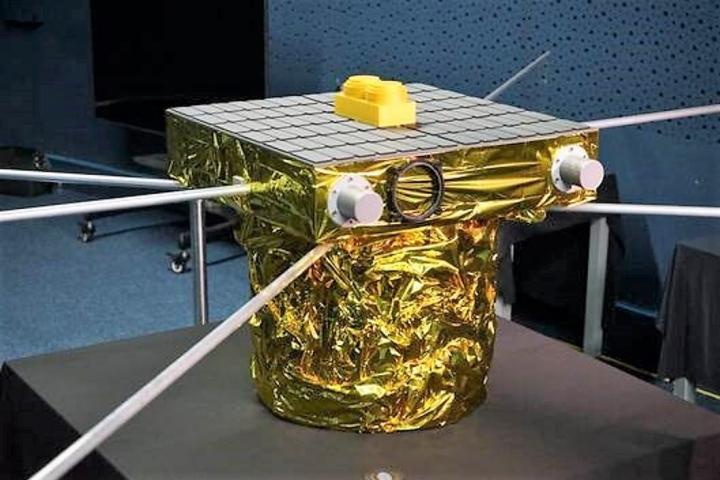
The probe contains three cameras, supplied by Stellar Exploration EU. These cameras are used to monitor the technical status of the satellite and take images of the Earth and the Moon. The main objective of the mission is to measure the concentration of dust in the Kordylewsky clouds located near the L4 and L5 libration points, 60° angular to the right and left of the Moon. Kordylew clouds are quasi-stable orbits that can trap interplanetary dust of a few microns in size. The spacecraft will be able to study turbulence in the solar wind and behind the Moon. Thanks to its unique orbit, it will be possible to study the flow of solar wind ions and interplanetary shock waves over the long term. The mission also includes collecting information on the flux of galactic cosmic rays and energetic particles from the Sun, including soft X-rays and gamma rays.
The project is the result of a successful cooperation between private companies, the Academy of Sciences and universities: the FEL CTU is involved through the MAGLAB laboratory (Department of Measurements), which will supply two magnetometers. A student of the Cybernetics and Robotics programme, Kajetán Šobíšek, designed the electronics of the fluxgate magnetometer prototype and part of the firmware in his bachelor thesis, and a PhD student, David Novotný from the Department of Measurements, is working on the reduction of the magnetic signature of the probe using an AMR magnetometer as part of his dissertation.
The Department of Surface and Plasma Science at the Faculty of Mathematics and Physics at Charles University will develop the Faraday Cup Analyzer to characterize the properties of solar wind plasma and measure its turbulence around the Moon. The Institute of Atmospheric Physics of the Czech Academy of Sciences will contribute LEW electric antennas and a Search Coil Magnetometer to make similar measurements in the electromagnetic region. The Department of Radiation Dosimetry of the Nuclear Physics Institute of the Academy of Sciences of the Czech Republic and the Faculty of Nuclear and Physical Engineering of CTU will present the PARDAL2 detector for the measurement of charged particle radiation.
The spacecraft will pass through interplanetary space away from the influence of the Earth's magnetosphere, but it will also reach regions of shock waves where the Earth's magnetosphere disrupts the flow of the solar wind, and it will also reach the Earth's magnetic tail, where interesting physical phenomena affecting space weather around our planet occur. The original dimensions of the satellite were 12-16 Cubesat-size cubes, or 10 × 10 × 10 cm, but it has gradually grown to its current size of 66 × 66 × 61 cm and weighs 140 kg, including fuel. The spacecraft is equipped with solar panels on the front and three battery modules with a total capacity of 300 Wh. Three hydrazine thrusters are used for propulsion.